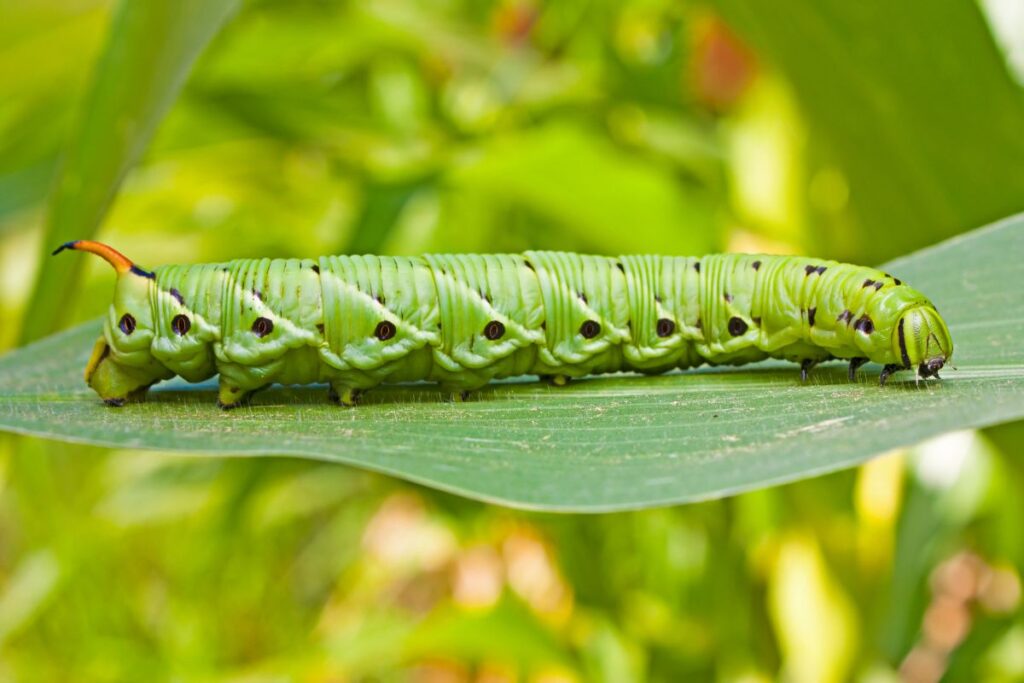Spotted a tomato hornworm in your garden?
Don’t panic!
Learn what steps to take to save your plants and prevent future infestations.
Ready to tackle this pest problem?
Let’s dive in!
How to Identify Tomato Hornworms

Look for large, green caterpillars with white and black markings. They can grow up to 4-5 inches long. Notice the horn-like projection on their rear, which is a distinct feature of these pests. Check for signs of damage such as missing leaves, visible dark green or black droppings, and chewed fruits.
Urgent Steps to Take
Handpick hornworms from your plants
Wearing garden gloves, carefully remove each caterpillar and place it in a bucket of soapy water.Inspect plants morning and evening
Hornworms are easier to spot during cooler hours as they are less active in the heat.Apply Bacillus thuringiensis (Bt)
This organic insecticide targets caterpillars without harming other garden wildlife.
Long-Term Prevention and Control

Cultivate plants that act as natural repellents, such as marigolds, which deter hornworms from settling on tomatoes. Implement companion planting strategies. For example, planting basil among tomatoes can help repel various pests, including hornworms. Regularly rotate your crops. As hornworms lay their eggs in the soil, rotating crops prevents them from finding their preferred host plants.
Handling Severe Infestations
Introduce natural predators like ladybugs, green lacewings, and birds into your garden to help control hornworm populations.
If the infestation becomes severe, consider using more potent chemical insecticides. This option should be a last resort due to potential harm to beneficial insects and the environment.
For additional assistance, consult a local extension office or a professional pest controller. Early intervention can prevent these caterpillars from taking over your garden.
Natural Predators:
- Ladybugs
- Green Lacewings
- Birds
Chemical Insecticides: Use only as a last resort due to environmental concerns.

